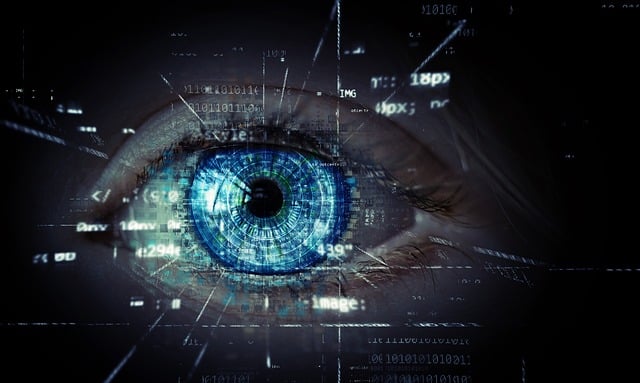Robotics in Education: Transforming Learning Experiences

Robotic technology has taken the world by storm, revolutionizing various industries, and education is no exception. In recent years, there has been a remarkable shift towards incorporating robotics into classrooms, transforming traditional learning experiences into something extraordinary. The integration of robotics in education opens up new horizons, nurturing critical thinking, problem-solving skills, and creativity among students.
One of the significant advantages of robotics in education is its ability to ignite students’ curiosity and engagement. Imagine a classroom buzzing with excitement as students delve into the realm of robotics, building and programming their own robots. These hands-on activities captivate their interest, making learning a truly immersive experience. With a sense of ownership over their creations, students become active participants in their educational journey, fostering a deeper understanding of core concepts.
Moreover, robotics empowers students to think analytically and develop essential skills for the future. By engaging in robotics projects, students learn to identify problems, devise solutions, and iterate through a process of trial and error. They tackle real-world challenges, simulating scenarios they may encounter in their future careers. This not only enhances their problem-solving abilities but also cultivates resilience and perseverance, valuable traits that will serve them well beyond the classroom.
Additionally, robotics encourages collaborative learning and teamwork. Students often work in groups to design and build robots, requiring them to communicate, delegate tasks, and collectively achieve goals. Through these collaborative efforts, students develop interpersonal skills, effective communication, and the ability to work harmoniously in diverse teams. These skills are vital in today’s interconnected world, where collaboration and cooperation are highly valued.
Furthermore, robotics provides a platform for interdisciplinary learning. It seamlessly integrates subjects like science, technology, engineering, arts, and mathematics (STEAM), enabling students to see the interconnections between these disciplines. For instance, while constructing a robot, students apply scientific principles, employ mathematical calculations, and unleash their creativity in designing the aesthetics. This interdisciplinary approach fosters a holistic understanding of the subjects, preparing students for the complexities of the modern workforce.
The integration of robotics in education has the power to transform learning experiences. By captivating students’ interest, nurturing critical skills, promoting collaboration, and fostering interdisciplinary learning, robotics opens up a world of possibilities for both educators and learners. As we embrace the wonders of robotic technology in classrooms, we pave the way for a future generation equipped with the knowledge and skills to thrive in an ever-evolving world.
Revolutionizing Classrooms: How Robotics in Education is Transforming Learning Experiences
Have you ever wondered what the future of education might look like? Well, get ready to be amazed because robotics is here to revolutionize classrooms and transform learning experiences. Yes, you heard it right! The integration of robotics in education is changing the way students learn and engage with subjects, bringing a whole new level of excitement and innovation into the classroom.
Imagine a classroom where students are not just passive listeners but active participants in their own education. With robotics, this vision becomes a reality. By incorporating robots into the curriculum, educators can create immersive and interactive learning environments that captivate students’ interest and nurture their curiosity.
But how exactly does robotics enhance the learning experience? Let’s delve into the details. First and foremost, robots provide hands-on learning opportunities. Students can design, build, and program robots, allowing them to apply theoretical concepts to real-world scenarios. This practical approach fosters critical thinking, problem-solving skills, and teamwork, all essential skills for the 21st century.

Moreover, robotics ignites students’ creativity and imagination. As they work with robots, they are encouraged to think outside the box, experiment with ideas, and come up with innovative solutions. It’s like having a playground of endless possibilities, where there are no limits to what they can create and achieve.
Additionally, robotics makes learning fun and engaging. Let’s face it, traditional teaching methods can sometimes feel monotonous and boring. But with robots as learning companions, the classroom becomes an exciting place where students eagerly explore and discover. Robots provide instant feedback, celebrate successes, and offer personalized learning experiences tailored to each student’s pace and needs.
Furthermore, robotics prepares students for the future job market. In a world increasingly shaped by technology, proficiency in STEM (Science, Technology, Engineering, and Mathematics) fields is highly valued. By introducing robotics early on, students develop a solid foundation in these subjects, positioning themselves for lucrative careers in fields such as robotics engineering, artificial intelligence, and automation.
Robotics in education is transforming learning experiences by bringing innovation, engagement, and excitement to the classroom. It empowers students to become active learners, sparks their creativity, and equips them with essential skills for the future. So, get ready to embrace the robotic revolution and witness the incredible impact it will have on education. The future of learning is here, and it’s filled with endless possibilities!
From Science Fiction to Reality: The Impact of Robotics on Education
Introduction:
Imagine a world where robots help shape the future of education, where science fiction becomes reality. In recent years, robotics has revolutionized various industries, and education is no exception. With their ability to engage students and enhance learning experiences, robots are transforming classrooms into dynamic and interactive environments. Let’s explore how robotics is making a profound impact on education.
Engaging Learning Experiences:
Gone are the days of passive learning. Robotics brings a new level of excitement to classrooms by fostering hands-on experiences. Students can now actively participate in constructing and programming robots, allowing them to apply theoretical knowledge in practical ways. This interactive engagement not only captures students’ interest but also encourages critical thinking, problem-solving skills, and teamwork. As robots become companions in the learning journey, students are motivated to explore complex concepts with enthusiasm.
Personalized Learning:
Every student learns at their own pace and has unique needs. Robotics offers the opportunity for personalized learning experiences. Intelligent robots can adapt their teaching methods based on individual strengths and weaknesses, providing tailored instruction to each student. This personalized approach ensures that students receive the support they need to succeed, boosting confidence and fostering a love for learning. By catering to diverse learning styles, robotics creates an inclusive and supportive educational environment.
Enhanced STEM Education:
Science, technology, engineering, and mathematics (STEM) education plays a vital role in preparing students for the digital age. Robotics serves as a catalyst for enhanced STEM learning. By engaging with robots, students gain practical exposure to these disciplines, developing essential skills like coding, problem-solving, and logical reasoning. The thrill of building and controlling robots ignites curiosity and passion for STEM fields, creating a pipeline of future innovators and problem solvers.

Preparing for the Future Job Market:
As automation and artificial intelligence reshape the job market, equipping students with relevant skills is crucial. Robotics education prepares students for future careers by nurturing skills that are in high demand. By working with robots, students develop a range of transferable skills such as creativity, adaptability, and collaboration. They learn to embrace technology and harness its potential, ensuring they are well-prepared for the jobs of tomorrow.
In Conclusion:
The impact of robotics on education is undeniable. From engaging learning experiences to personalized instruction, robotics provides a transformative approach to teaching and learning. By integrating robots into classrooms, we empower students to become active participants in their education, fostering a lifelong love for learning and preparing them for a rapidly evolving world. The future is here, where science fiction has become reality, and robotics continues to shape the landscape of education.
Unleashing the Future of Education: Robotics Takes Center Stage in Learning
Are you ready to witness a revolutionary transformation in education? Brace yourself as robotics steps into the spotlight, paving the way for a whole new era of learning. From science fiction dreams to tangible reality, robots have become an integral part of modern education, transcending traditional boundaries and unlocking endless possibilities.
Imagine a classroom where students are not merely passive recipients of information but active participants in their own education. Enter the world of educational robots, where interactive machines engage students in immersive learning experiences. These mechanical marvels serve as captivating instructors, captivating young minds through their ability to demonstrate complex concepts in a visual and tangible manner.
Gone are the days when textbooks and lectures alone could ignite the spark of curiosity. With robotic companions by their side, students embark on a journey of exploration and discovery. These robots act as mentors and guides, providing personalized assistance tailored to each student’s unique learning needs. Whether it’s teaching mathematics, coding, or even foreign languages, these technological tutors adapt to individual progress, encouraging growth at every step.
But what makes robotics truly remarkable in education is its ability to foster essential 21st-century skills. As students collaborate with robots, they develop critical thinking, problem-solving, and communication abilities. Robotics projects require teamwork, encouraging students to cooperate, negotiate, and share ideas. The result? A generation of learners who are not just well-versed in academic knowledge but also equipped with the skills necessary to thrive in an increasingly interconnected and technologically advanced world.

Moreover, robotics provides an inclusive learning environment that caters to diverse needs and abilities. For students with disabilities, robots offer a level playing field, enabling them to actively participate alongside their peers. These machines break down barriers, promoting inclusivity and empowering all learners to reach their full potential.
As we embrace the future of education, let us recognize the profound impact robotics can have on learning. Just as a skilled conductor brings harmony to an orchestra, robots orchestrate a symphony of knowledge and innovation in the classroom. So, let us welcome these mechanical maestros with open arms, for they hold the key to unlocking a future where education knows no bounds.
In this transformative era, it is crucial to embrace the wonders of robotics and harness its potential to revolutionize education. Let us embark on this remarkable journey together, where the fusion of technology and learning lays the foundation for a brighter tomorrow. The time has come to unleash the power of robotics and watch as it takes center stage in shaping the future of education.
Empowering Students through Technology: Robotics Brings Innovation to Education
Are you ready to witness the power of technology in education? Brace yourself as we delve into the fascinating world of robotics and its empowering impact on students. In this digital era, where innovation reigns supreme, robotics emerges as a game-changer, revolutionizing the way we educate our future generations.
Imagine a classroom buzzing with excitement, where students immerse themselves in the realm of robotics. With every click and whirr, they embark on a journey of discovery, exploring the endless possibilities that technology offers. Robotics transcends traditional learning methods, captivating young minds and igniting their passion for science, technology, engineering, and mathematics (STEM).

Why is robotics such a powerful tool for education? Well, let’s take a closer look. Firstly, robotics provides a hands-on experience like no other. Through the process of building and programming robots, students actively engage with complex concepts in a tangible way. They become creators, problem-solvers, and critical thinkers, nurturing skills essential for the modern world.
Moreover, robotics fosters collaboration and teamwork. As students work together to overcome challenges, they develop communication and interpersonal skills. They learn to listen, share ideas, and compromise, realizing that success often lies in collective efforts. This prepares them not only for their academic journey but also for the collaborative nature of the professional world.
Additionally, robotics sparks creativity and innovation. When faced with real-world problems, students are encouraged to think outside the box, devising unique solutions through trial and error. The freedom to experiment instills in them a sense of resilience and adaptability—an invaluable trait in an ever-evolving society.
Furthermore, robotics cultivates a growth mindset among students. By embracing failure as a stepping stone to success, they learn to persevere and embrace challenges. Through robotics, they understand that setbacks are mere opportunities for improvement, enabling them to develop a resilient attitude towards obstacles they encounter in various aspects of life.

The integration of robotics into education empowers students by providing a dynamic, engaging, and immersive learning experience. It equips them with the skills needed to thrive in a technology-driven world while fostering creativity, collaboration, critical thinking, and resilience. By embracing robotics, we unlock the potential within each student, propelling them towards a brighter future filled with innovation and endless possibilities. So, let’s embrace this transformative journey and witness the extraordinary impact of robotics on education.




